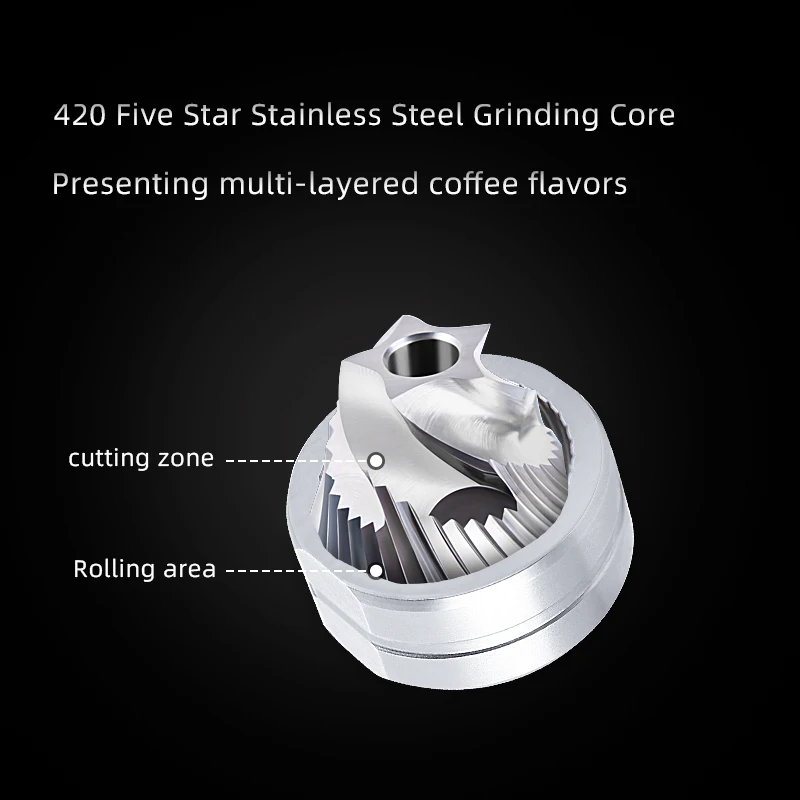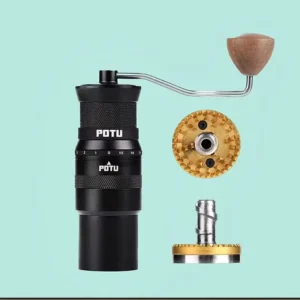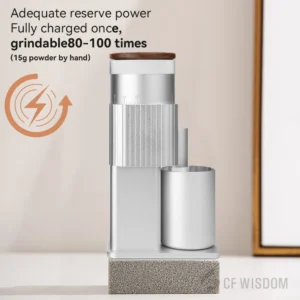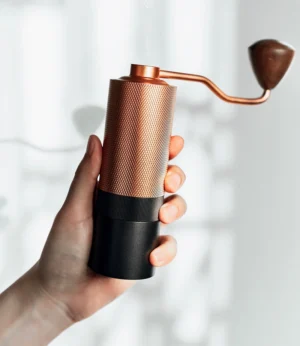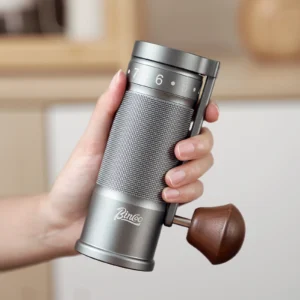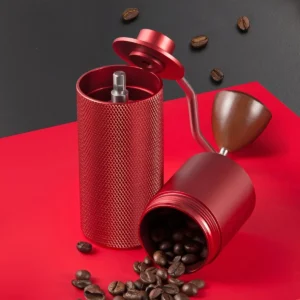What Makes the Ideal Espresso Grind Size for Manual Machines?
When it comes to creating exceptional espresso with a manual machine, understanding the proper grind size is essential. Manual espresso machines differ significantly from their automatic counterparts in how they rely on grind size for successful extraction.
Unlike automatic machines that use consistent mechanical pressure, manual espresso makers depend on user-applied force through a lever or press system. This human element creates a unique relationship between you, the machine, and your coffee grounds. The grind size becomes even more critical because it directly impacts how pressure builds and water flows through the coffee bed.
Manual machines require more precision in grinding because:
- They lack the electronic pressure regulation found in automatic machines
- The user controls pressure application throughout extraction
- Manual pressure varies naturally during the pull
- Flow resistance comes primarily from the coffee bed itself
Studies show that extraction percentages can vary by up to 10% with just minor changes in grind size when using manual machines. This sensitivity makes mastering espresso precision grind settings absolutely fundamental to consistent results.
The concept of “dialing in” your grind becomes an essential skill rather than just a recommendation. This process involves making small, methodical adjustments to your grind setting until you achieve the perfect extraction. For those serious about manual espresso, investing in quality espresso coffee hand grinders is often the first step toward consistency.
Let’s explore what makes the perfect grind for your manual espresso journey.
The Visual and Tactile Characteristics of the Perfect Manual Espresso Grind
Identifying the ideal espresso grind for your manual machine involves engaging multiple senses. The perfect grind has distinctive visual and tactile properties that serve as reliable indicators of extraction potential.
For manual espresso machines, the optimal grind is notably fine – even slightly finer than what many pre-ground espresso blends provide. When properly ground, the coffee should have a texture resembling powdered sugar with just a hint of grittiness. This consistency creates the necessary resistance for proper extraction under manually applied pressure.
When you examine properly ground espresso coffee, look for these key characteristics:
- Texture similar to fine sand but slightly more powdery
- Uniform particle size throughout the batch
- Slight clumping when gently pressed between fingers
- A rich, deep color without visible larger particles
A simple “pinch test” can help assess your grind quality. Take a small amount between your thumb and forefinger and rub gently. The perfect manual espresso grind should feel somewhat like flour but with the slightest detectable graininess. If it feels like table salt or sugar, it’s too coarse for manual espresso extraction.
Understanding the perfect espresso grind texture helps you develop an intuitive sense of what works for your specific manual machine. This sensory knowledge proves invaluable when making adjustments to your fine adjustment hand grinder to achieve consistent results.
The Science Behind Grind Size and Manual Extraction
The relationship between grind size and extraction is governed by fundamental physical principles that directly impact your espresso quality. Understanding this science helps explain why finding the right grind matters so much for manual machines.
At its core, coffee extraction involves surface area and resistance. When beans are ground finer, they create exponentially more surface area for water contact. For example, grinding a coffee bean into 1,000 particles versus 100 particles doesn’t just create 10 times more surface area – the increase is much more dramatic. This expanded surface area allows water to extract soluble compounds more efficiently.
In manual espresso machines, this science translates directly to:
- Finer grinds create more resistance to water flow
- Increased resistance allows pressure to build properly in the portafilter
- Proper pressure ensures water passes through at the ideal rate (25-35 seconds)
- Optimal flow rate extracts desired flavor compounds without over-extracting bitter elements
The manual pressure application interacts with this resistance in a dynamic way. When you apply pressure to a properly ground coffee bed, it creates the necessary environment for emulsifying coffee oils and extracting complex flavors. Too coarse, and water rushes through without proper extraction. Too fine, and even strong manual pressure can’t overcome the resistance.
Research shows that the majority of desirable flavor compounds extract within the first 15-25 seconds of contact with hot water. The best grind size affects espresso extraction by creating just enough resistance to allow these compounds to dissolve while preventing bitter compounds from dominating.
Investing in quality manual espresso grinders provides the consistency and control needed to master this scientific balance between grind size, pressure, and extraction time.
How to Dial In Your Grind for Manual Espresso: Step-by-Step Process
Dialing in your grind size is a methodical process that helps you find the perfect setting for your specific manual espresso machine, coffee beans, and personal taste preferences. Follow these steps to achieve optimal results:
Start with quality equipment
Begin with a high-quality burr grinder capable of fine adjustment. Blade grinders simply cannot provide the consistency needed for espresso.Find your baseline setting
Set your grinder to what appears to be an espresso-fine setting. For most manual grinders, this is typically near the finest settings, but not completely at the finest to avoid clogging.Prepare a consistent dose
Measure exactly 14-18g of coffee (depending on your basket size) to ensure variables are controlled.Pull a test shot
Tamp with consistent pressure and pull an espresso. Time the extraction from the moment you begin applying pressure until you reach your target yield (typically 25-35 seconds for a 1:2 ratio).Evaluate results
Assess the flow rate, appearance, and taste of your espresso. Look for:
– Flow beginning after 5-8 seconds of pressure application
– Even, steady stream with caramel-like consistency
– Rich crema formation
– Balanced flavor without sourness or intense bitternessMake measured adjustments
– If the shot pulled too quickly (under 20 seconds): Make your grind finer
– If the shot barely flowed or choked (over 40 seconds): Make your grind coarser
– Make small, incremental adjustments (typically 1-2 “clicks” or notches on your grinder)
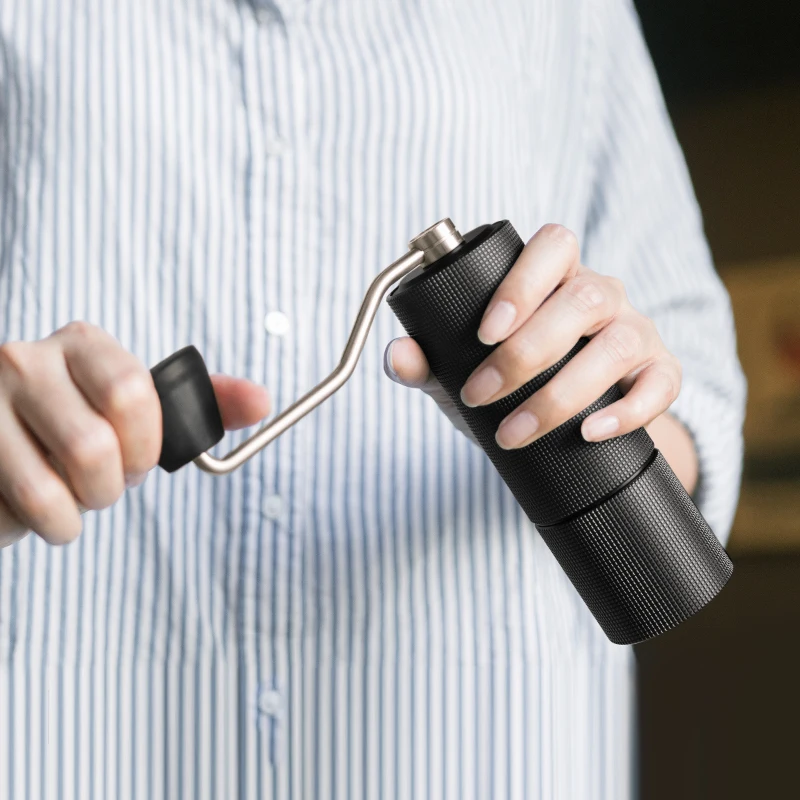
Document your results
Keep notes on what settings work best for different coffee beans. Many variables change with different roast profiles and bean origins.Repeat the process
Pull another shot with your adjusted setting and continue this cycle until you achieve optimal results.
Mastering perfect espresso adjustments takes practice, but the process becomes intuitive over time. Your efforts will be rewarded with significantly better tasting espresso. A precision manual grinder with fine adjustment capabilities makes this dialing-in process considerably easier and more accurate.
Grind Size Troubleshooting Guide for Manual Espresso Makers
Even experienced home baristas encounter extraction issues. Here’s how to identify common problems related to grind size and resolve them efficiently:
Problem: No Flow/Choked Machine
* Symptoms: Extremely slow drips or no flow at all, excessive resistance when applying pressure
* Cause: Grind is too fine, creating over-compaction and blocking water passage
* Solution: Adjust grinder 2-3 notches coarser and try again. If using fresh, oily beans, you may need an even coarser adjustment as oils can contribute to choking.
Problem: Too-Fast Extraction/Gushers
* Symptoms: Coffee flows too quickly (under 15 seconds), appears watery, lacks crema, tastes sour and underdeveloped
* Cause: Grind is too coarse, allowing water to rush through without proper extraction
* Solution: Make your grind notably finer. For severe gushers, you may need to go 3-4 notches finer.
Problem: Uneven Extraction/Channeling
* Symptoms: Coffee flows unevenly, spurts from sides of portafilter, extraction appears blonde with dark spots
* Cause: Inconsistent grind size creating channels where water bypasses most of the coffee
* Solution: Ensure your grinder produces uniform particle sizes and improve your distribution technique. Sometimes a slightly coarser grind can actually reduce channeling.
Problem: Inconsistent Results Despite Same Settings
* Symptoms: Shots pull differently despite using the same grind setting
* Cause: Bean freshness changes, ambient humidity, or temperature fluctuations
* Solution: Make minor grind adjustments daily based on results rather than relying solely on grinder settings. Monitor environmental factors.
Troubleshooting espresso grind issues becomes easier with experience and quality equipment. When persistent problems occur, consider whether your manual coffee grinder for espresso provides the consistency and adjustment range needed for proper extraction.
Why Pressure Control and Grind Size Are Inseparable in Manual Machines
The unique aspect of manual espresso machines is the direct physical connection between the user and the extraction process. This relationship creates a special interplay between grind size and pressure application that doesn’t exist with automatic machines.
With a manual machine, you physically feel the resistance created by the coffee bed through the lever or press. This tactile feedback becomes a critical indicator of grind appropriateness. When your grind size is correct, you’ll experience smooth resistance that gradually increases as pressure builds – not unlike the feeling of compressing a firm spring.
The pre-infusion phase, where water initially saturates the coffee puck before full pressure extraction, is particularly affected by grind size. A properly ground coffee allows for:
- Even saturation during pre-infusion
- Appropriate swelling of coffee particles without blocking flow
- Gradual resistance build-up that you can feel through the lever/press
- The ability to manually adjust pressure during extraction
Many experienced manual espresso enthusiasts develop pressure profiling techniques – intentionally varying the pressure during different extraction phases. These techniques only work with the perfect grind size. Too fine, and even the gentlest pressure causes over-extraction; too coarse, and no amount of pressure can compensate for the rapid flow.
Understanding the differences between manual versus automatic espresso grinder settings helps you better appreciate why manual machines often require slightly finer grinds than their automatic counterparts. Quality manual burr mills provide the precision needed to match your grind perfectly to your manual pressure technique.
Essential Equipment: Choosing the Right Grinder for Manual Espresso
The grinder you select has a profound impact on your manual espresso results. When extracting with manual pressure, grind quality becomes even more critical than with automatic machines.
Burr grinders are absolutely essential for manual espresso success. Unlike blade grinders that chop beans haphazardly, burr grinders crush beans between two abrasive surfaces, creating consistent particle sizes. This consistency directly translates to even extraction and predictable results.
Key features to look for in an espresso-capable grinder include:
- Stepless or micro-stepped adjustment: Allows for tiny incremental changes needed for dialing in
- Quality burrs: Preferably made from hardened steel or ceramic for durability and consistency
- Minimal grind retention: Reduces waste and prevents old grounds mixing with fresh ones
- Stability during grinding: Prevents burr movement that can create inconsistent particle sizes
- Fine enough settings: Many grinders claim “espresso capability” but can’t actually grind fine enough
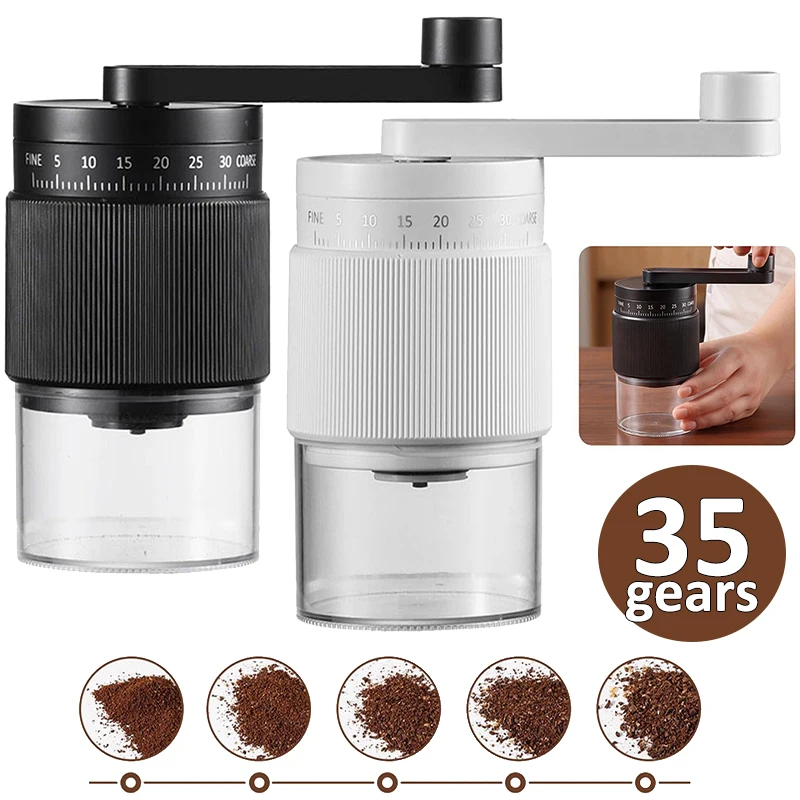
When choosing between conical and flat burrs, conical burrs often work well for manual espresso as they produce a bimodal distribution (a mix of fine and slightly larger particles) that creates ideal resistance for manual pressure. Flat burrs generate more uniform particle sizes that may benefit certain manual techniques.
Fine Adjustment Hand Grinder, Precision Manual Grinder, Travel Coffee Grinder
Price range: $185.11 through $494.63 Select options This product has multiple variants. The options may be chosen on the product pageHand Burr Grinder, Hand Crank Coffee Grinder, Manual Espresso Grinder, Portable Coffee Grinder
Price range: $262.72 through $300.22 Select options This product has multiple variants. The options may be chosen on the product pageManual Burr Mill, Manual Coffee Grinder Stainless Steel, Manual Coffee Mill Grinder, Mechanical Coffee Grinder
Price range: $127.26 through $130.32 Select options This product has multiple variants. The options may be chosen on the product pageHand Burr Grinder, Manual Coffee Grinder Stainless Steel, Precision Manual Grinder
Price range: $183.64 through $187.52 Select options This product has multiple variants. The options may be chosen on the product page
Consulting a detailed espresso grind size chart can help you better understand what your specific machine requires. Quality manual coffee burr grinders represent an investment in extraction quality that pays dividends in your cup every day.
Beyond the Grind: Other Variables Affecting Manual Espresso Quality
While grind size remains paramount for manual espresso success, several other factors work in concert with your grind to determine final cup quality.
Bean Freshness
The age of your coffee significantly impacts optimal grind settings. As beans age:
* They release CO2 and become less resistant to water
* They require progressively finer grinding to maintain proper flow rate
* Their oils begin to degrade, altering extraction characteristics
Water Temperature
Temperature directly affects extraction speed and solubility:
* Higher temperatures (200-205°F) extract more quickly and may require slightly coarser grinds
* Lower temperatures (190-195°F) extract more slowly, potentially needing finer grinds
* Temperature stability throughout extraction affects consistency
Dose Precision
The amount of coffee you use interacts directly with grind size:
* Higher doses require slightly coarser grinds to maintain flow
* Lower doses need finer grinds to create sufficient resistance
* Consistent dosing (within 0.2g) is essential for repeatable results
Puck Preparation
How you prepare your coffee bed dramatically impacts extraction:
* Distribution techniques prevent channeling by creating an even coffee bed
* Tamping pressure affects density and resistance (aim for consistent pressure)
* Tools like distribution needles (WDT) can improve evenness regardless of grind
Basket Design
Your portafilter basket’s size and hole pattern interact with grind size:
* Precision baskets with more uniform holes require more consistent grinding
* Larger baskets typically need slightly coarser grinds than smaller ones
* Straight-walled versus tapered baskets extract differently with the same grind
Quick Reference Guide: Grind Adjustment for Common Espresso Issues
Use this quick reference table to troubleshoot common manual espresso extraction issues and make appropriate grind adjustments:
| Problem | Visual Signs | Taste Signs | Adjustment Needed |
|---|---|---|---|
| Under-extraction | Fast flow, blonde color, thin body | Sour, sharp, lacking sweetness | Make grind finer (2-3 notches) |
| Over-extraction | Very slow, dark syrupy flow, uneven stream | Bitter, astringent, harsh | Make grind coarser (2-3 notches) |
| Channeling | Spurting, uneven flow, “dead spots” in puck | Simultaneously sour and bitter | Improve distribution, consider slightly coarser grind |
| Inconsistent shots | Varying flow rates, unpredictable timing | Unpredictable taste between shots | Check grinder for retention, ensure consistent dosing |
| Choking (no flow) | No espresso flow after 10+ seconds | N/A (can’t taste) | Make grind significantly coarser (3-4 notches) |
| Puck breaks during extraction | Initial flow followed by sudden rush | Undeveloped, watery, weak | Slightly finer grind, improve tamping technique |
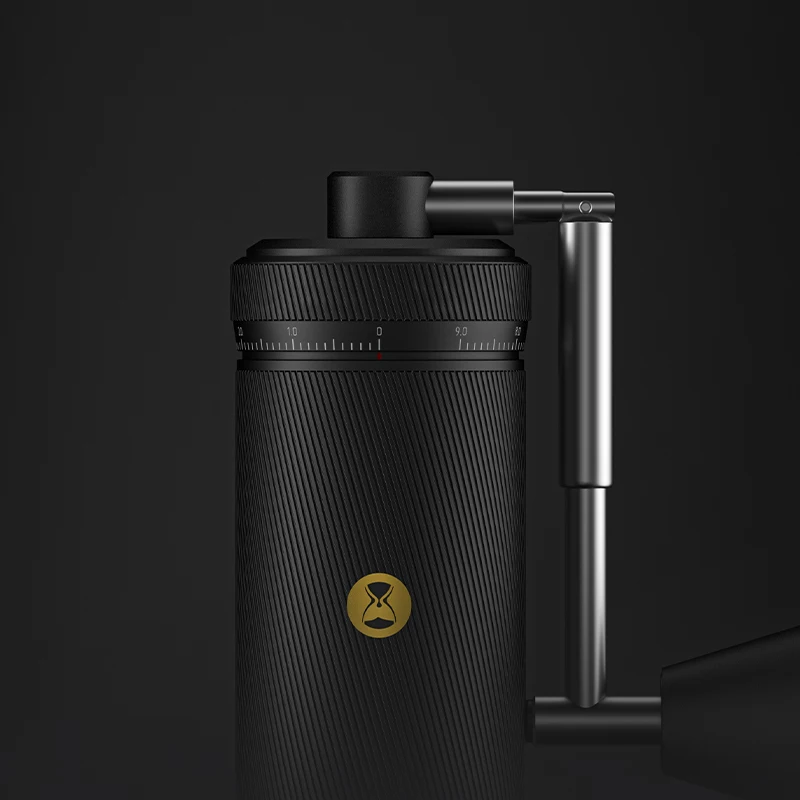
Target Manual Espresso Parameters:
* Dose: 14-18g (depending on basket size)
* Yield: 25-40g of espresso (1:1.5 to 1:2.5 ratio)
* Time: 25-35 seconds from first pressure application
* Flow initiation: First drops appear after 5-8 seconds of pressure
* Stream consistency: Honey-like flow without spurting
Understanding these relationships helps you make better adjustments to your espresso grind settings for the perfect shot when using manual machines.
Why Manual Espresso Masters Focus Obsessively on Grind Size
Skilled manual espresso enthusiasts develop an almost meditative relationship with their grind settings. This focus isn’t mere perfectionism but recognition that grind size provides the foundation for everything that follows.
When you master grind control, you unlock the ability to highlight specific flavor characteristics in different coffees. A slightly finer grind might accentuate chocolate notes in a Brazilian bean, while a marginally coarser setting could enhance the fruity brightness of an Ethiopian coffee.
The process of learning to manage grind size transforms the daily ritual of espresso-making from a simple beverage preparation into a craft. Each small adjustment teaches you something about the brewing process, building intuition that guides future extractions. The tactile feedback from a manual machine puts you in direct conversation with your coffee, offering immediate insights about your grind quality.
This attention to detail ultimately creates an espresso experience that mass-produced methods simply cannot match. The definitive guide to espresso grind size and flavor shows how small adjustments can dramatically influence your cup profile.
The journey to perfect manual espresso is continuous and personal. With each properly ground and extracted shot, you gain deeper appreciation for the remarkable complexity contained within the humble coffee bean.

